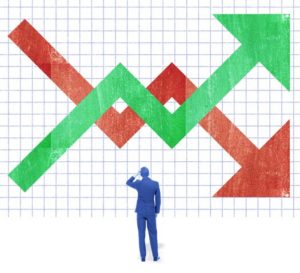

Globally, small and medium-sized enterprises are widely recognized as the engine of growth and innovation in most economies. In Nigeria, inclusive of micro enterprises, they constitute 99.8% of all businesses, with the vast majority engaging less than ten employees. However, the tragedy in the Nigerian context is that these statistics have not evolved over time, revealing the inability of most actors to transition from micro to small, and from small to medium.
Sadly, most Nigerian businesses remain stuck – struggling for survival, linked to a range of factors – the persistent one, as reinforced by a recent survey conducted by Sahel Consulting, being the limited access to affordable working capital for scaling. – is financing challenge is more pronounced when we consider smallholder farmers who are faced with the seasonality of rain-fed agriculture, and need to be able to make an upfront investment in labour for land clearing and preparation, seeds and fertilizer at the beginning of the planting season.
For example, a rice smallholder farmer operating in Kano State would need approximately $805 (290,000 naira) in working capital at the beginning of the planting season for 1 hectare of land. A maize smallholder farmer operating in Oyo State would need at least $890 (321,000 naira) for 1 hectare of land. With working capital deployed at the right time, both rice and maize farmers would make $172 (62,000 naira) and $189 (68,000 naira) per hectare in profits respectively during off season sales. In both contexts, and with the right agronomic practices, training and market linkages, they both would be able to pay back their loans.
Sadly, these two farmers continue to struggle to access affordable and appropriately structured loans at the right time. – e acess to financing challenge persists because of the absence of reliable information and a lack of effective and efficient communication and co-ordination between smallholder farmers, financial service providers, service providers and policy makers. For example, in 2015, the Central Bank of Nigeria (CBN), established the Anchor Borrowers’ Programme (ABP) in line with its developmental mandate. The programme targeted farmers who produced key agricultural commodities such as rice, maize and cassava. Smallholder farmers were provided with farm inputs in kind and cash (for farm labour) to boost the production of their commodities, stabilize inputs supply to agro-processors and address the country’s negative balance of payments on food.
To achieve this, selected Nigerian banks went to rural communities to register the farmers, ensuring that they obtained Bank Verification Numbers (BVN), a biometric identification system established by the CBN. Using GPS technology to determine the size of farms and their eligibility for financing, the banks were able to select deserving farmers who benefited from average loan sizes of $417. Sadly, in most cases, where the banks did not formally partner with service providers to offer training and ensure timely input delivery and market linkages, the intervention was ineffective. Some farmers even noted receiving the inputs or funding after the planting season. This is led to many reports of non-performing loans, reinforcing the perceived high-risk prole of funding smallholder farmers. In a few cases of success under the ABP, organisations such as Babban Gona, which works with 20,000 farmers, played a key role in identifying, registering and training its members, facilitating access to inputs and effectively managing the ABP loan directly to ensure effective repayment. Beyond ABP, there are emerging successful loan interventions for smallholder farmers being implemented by service providers such as AFEX and -rive Agric.
These service providers have built sustainable ecosystems in farmers communities, and partnered with microÂfinance institutions such as LAPO, levering technology to communicate with farmers and provide financing to a network of 100,000 farmers, and 10,000 farmers respectively. Key to their success is their proximity to and close relationship with the farming communities with which they work and the trust that results. While these examples are promising, the reality is that they are not reaching enough farmers and the scale of the challenge is greater than their current ability to intervene. 88% of Nigeria’s farmers are smallholders (they own plots of land 2 hectares or smaller) and 72% of these are classified by global metrics as living in extreme poverty. If we can scale these initiatives and reach the millions of farmers who desperately need growth and working capital then we can not only pull millions out of an unsustainable cycle of poverty, but provide the engine room for future economic growth.
To do this, we urgently need to invest in wider and deeper partnerships between the public and private sector. We need to leverage precision agriculture and big data to ensure that the – financial services sector understands the needs of farmers, and that the Central Bank can foster an enabling policy environment that enables appropriate, affordable and timely lending to meet the specific needs of these farmers. Nigeria needs more farmers to transition from micro, to small, medium and large businesses, leveraging economies of scale to drive the agricultural transformation required to ensure that Nigeria can feed itself and become a net exporter of food. -is can only be realised through the provision of appropriate, affordable and timely financing, leveraging digital tools and partnerships with service providers. We are already seeing success on a modest scale. Now is the time to double down on these investments and ensure that we achieve the scale necessary to deliver real and long term impact.
Credit: The post Financing Scaling For Nigeria’s Smallholder Farmers first appeared in The African Business Magazine September, 2019



